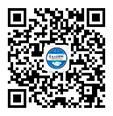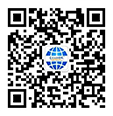| [1] |
路恒. 高强度间歇训练小周期训练单调性对有氧能力的影响[A]. 中国体育科学学会. 第十一届全国体育科学大会论文摘要汇编[C]. 中国体育科学学会: 中国体育科学学会, 2019: 3.
|
| [2] |
|
| [3] |
云博, 吴景东. 氧化应激与相关疾病及其作用机制[J]. 沈阳医学院学报,2018,20(3):272−276.
|
| [4] |
Martin, Ott, Vladimir, et al. Mitochondria, oxidative stress and cell death[J]. Apoptosis,2007.
|
| [5] |
Zhai M, Li B, Duan W, et al. Melatonin ameliorates myocardial ischemia reperfusion injury through SIRT3-dependent regulation of oxidative stress and apoptosis[J]. Journal of Pineal Research,2017,63(2).
|
| [6] |
A M M , A R M H , A A S G , et al. Exploring the use of nanocarrier systems to deliver the magical molecule: Curcumin and its derivatives[J]. Journal of Controlled Release, 2016, 225: 1−30.
|
| [7] |
Susan H, Douglas K. Curcumin: A review of its' effects on human health[J]. Foods,2017,6(10):92. doi: 10.3390/foods6100092
|
| [8] |
Kunnumakkara, Ajaikumar B, Bordoloi, et al. Curcumin, the golden nutraceutical: Multitargeting for multiple chronic diseases[J]. British Journal of Pharmacology,2017.
|
| [9] |
|
| [10] |
李影, 郭标. 姜黄素改善过度训练所致的骨骼肌氧化应激损伤及运动疲劳的研究[J]. 中国临床药理学杂志,2019,35(22):2887−2889.
|
| [11] |
邵奇, 王倩梅, 马善波, 等. 姜黄素对小鼠急性肺损伤的保护作用[J]. 陕西中医药大学学报,2020,43(4):63−67.
|
| [12] |
丁立, 林修良, 马丽, 等. 姜黄素及其类似物应用于肝脏疾病的研究进展[J]. 广东化工,2019,46(19):244−245, 247.
|
| [13] |
程耀明. 姜黄提取物对运动小鼠生理疲劳和生理机能的影响[J]. 基因组学与应用生物学,2019,38(12):5738−5743.
|
| [14] |
|
| [15] |
|
| [16] |
Sivasami P, Hemalatha T. Augmentation of therapeutic potential of curcumin using nanotechnology: Current perspectives[J]. Artificial Cells,2018:1−12.
|
| [17] |
冯涛, 曾小兰, 王珂, 等. 短链葡聚糖-姜黄素纳米乳液的制备及结构表征[J]. 农业工程学报,2019,35(1):311−317.
|
| [18] |
|
| [19] |
Holder, Plummer, Ryan. The metabolism and excretion of curcumin (1, 7-Bis-(4-hydroxy-3- methoxyphenyl)- 1, 6-heptadiene-3, 5-dione) in the rat[J]. Xenobiotica,1978,8(12):761−768. doi: 10.3109/00498257809069589
|
| [20] |
王玮琛. 姜黄素分离与纳米颗粒制备及对疲劳应激损伤的修复作用[D]. 哈尔滨: 哈尔滨工业大学, 2020.
|
| [21] |
江萍. 基于Caco-2细胞模型的乳清蛋白纳米载体提高姜黄素吸收率的研究[D]. 北京: 北京化工大学, 2018.
|
| [22] |
张聪聪, 金若敏. HPLC法测定大鼠血浆中姜黄素的含量及其药动学研究[J]. 中国新药杂志,2014,23(15):1829−1832.
|
| [23] |
胡戈, 曹卉, 周海涛, 等. 姜黄素对过度训练大鼠肾脏细胞凋亡的调控作用及其机制[J]. 中国应用生理学杂志,2018,34(6):513−518, 583−584.
|
| [24] |
Chen, Li, Tang. Nanocomplexation of soy protein isolate with curcumin: Influence of ultrasonic treatment[J]. Food Research International,2015,75(sep.):157−165.
|
| [25] |
毛华. 基于肠淋巴吸收的姜黄素自乳化给药系统的研究[D]. 成都: 成都医学院, 2015.
|
| [26] |
Wu J, Wang J, Zhang J, et al. Oral delivery of curcumin using silk nano-and microparticles[J]. ACS Biomaterials Science & Engineering,2018,4(11):3885−3894.
|
| [27] |
郭庆军, 常耀明, 李金声, 等. 大鼠游泳运动疲劳模型力竭标准的研究[J]. 现代生物医学进展,2010,10(15):2855−2858.
|
| [28] |
Prasad, Tyagi, Aggarwal. Recent developments in delivery, bioavailability, absorption and metabolism of curcumin: the golden pigment from golden spice[J]. Cancer Research & Treatment Official Journal of Korean Cancer Association,2014,46(1):2−18.
|
| [29] |
Crivelli, Bari, Perteghella, et al. Silk fibroin nanoparticles for celecoxib and curcumin delivery: ROS-scavengingand anti-inflammatory activities in an in vitro model of osteoarthritis[J]. European Journal of Pharmaceutics and Biopharmaceutics,2019,137:37−45. doi: 10.1016/j.ejpb.2019.02.008
|
| [30] |
Wang J, Li S, Fan Y, et al. Anti-fatigue activity of the water-soluble polysaccharides isolated from Panax ginseng C. A. Meyer[J]. Journal of Ethnopharmacology,2010,130(2):421−423. doi: 10.1016/j.jep.2010.05.027
|
| [31] |
Chi A, Li H, Kang C, et al. Anti-fatigue activity of a novel polysaccharide conjugates from Ziyang green tea[J]. International Journal of Biological Macromolecules,2015,80:566−572. doi: 10.1016/j.ijbiomac.2015.06.055
|
| [32] |
Li J, Sun Q, Meng Q, et al. Anti-fatigue activity of polysaccharide fractions from Lepidium meyenii Walp. (maca)[J]. International Journal of Biological Macromolecules,2017,95:1305−1311. doi: 10.1016/j.ijbiomac.2016.11.031
|
| [33] |
武胜奇. 自由基, 抗氧化剂与运动能力的关系[J]. 南京体育学院学报(自然科学版),2012,11(3):40−42.
|











 DownLoad:
DownLoad: